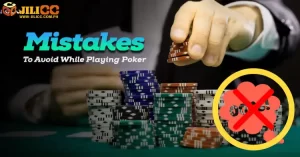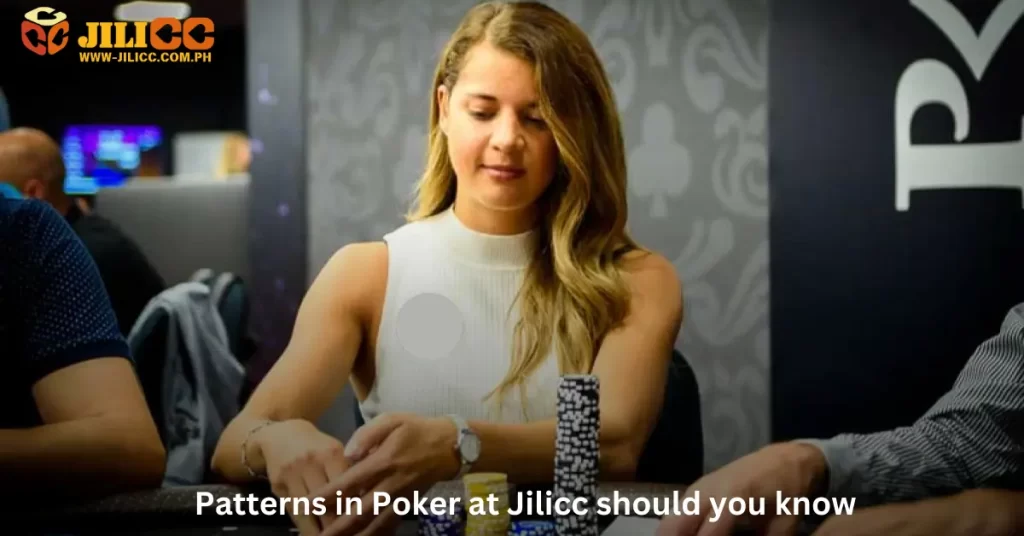You want to learn a strategy that is going to make you the winner at the tables. You have read some basic articles and watched a number of videos, but you are still not confident at the tables. What patterns in poker at Jilicc should you know?
Why is it so hard to spontaneously make the right decisions? In this article, we’ll dive into the key poker patterns you should know at Jilicc and how to use them to your advantage.
Understanding Patterns in Poker at Jilicc
A poker pattern is an action or behavior repeated over and over in a Poker game. The patterns can give away quite a bit of information about a player’s strategy, hand strength, and even their state of mind. Such kinds of patterns, when recognized and probably exploited, would give you quite a big edge at the table by means of your being able to somewhat predict your opponents’ moves and adjust your strategy based on their play.
Betting Patterns and What They Reveal

One of the most important things to recognize while playing poker is betting patterns. Each player develops a fairly unique way of betting over time, and by watching these tendencies, you can judge yourself against the hand strength of the other players.
Aggressive Betting Patterns
Players who are aggressive with their bets and raises-one of two things: they are having strong hands, or they bluff and try to intimidate their opponents with those bets and raises. The key to beating them is thinking when their aggression is real.
An aggressive player who is not betting that much on each round may just be building the pot with a mediocre hand. Observe how they behave on the turn and river. Larger bets may indicate that they finally hit a strong hand.
Conservative Betting Patterns
Player Types: Conservative players are primarily checking or calling, waiting for premium hands. They hardly ever bluff, but in their actions, they will always be more cautious and avoid gambling on any hand whenever possible.
Whenever you are playing against a player who starts off conservatively and then becomes aggressive, that is a good indication that their hand is strong. Be wary of unexpected raises.
Unpredictable Betting Patterns
Some players mix up their playing to make spotting patterns difficult. Most of the time, they do variations in bets, both small and big, irrespective of hand strength. At times, they bluff a lot or go on unanticipated all-ins.
Against wild players, pay close attention to the size of their bets in various situations. When they are always betting larger with a strong hand and then suddenly start betting with a small bet with bluffs, you can exploit them by noticing when their behavior changes.
Physical Tells vs. Betting Patterns in Poker at Jilicc
Where live poker is concerned, the players count on “tells” such as body language, facial expressions, or nervous habits to give insight into their opponents’ hands. Since no physical tells are available with Jilicc online poker, betting patterns will be the chief means by which you’ll read your opponents.
Timing Tells in Online Poker
One of the most general tells in online poker is the time taken via one’s play. Players who have a long checking time are likely to be weak or pretending to be strong, so that you fall into their trap. A swift bet, on the other hand, may signal your confidence to act fast or make him fold in the least time.
When the opponent takes too much time before betting, especially on the river, he may be on a bladder or not so confident with his hand. Fast raises normally mean strong hands, but some experienced players use reverse psychology and play deliberately fast in case of a weakened hand.
Bet Sizing in Online Poker
Therefore, bet sizing can become an important indicator of a player’s strategy. In online poker, it is so easy to observe consistent patterns of bet sizing. A player who constantly bets the same amount regardless of his hand strength may well be on a bluff or may be inexperienced.
In case one of the players often makes a big bet with his best hands but small when on a bluff, you can exploit the player’s smaller bets by calling or raising.
Opponent Pattern Recognition at Different Stages
Another vital part of poker strategy is understanding how players behave throughout the different stages of a hand: pre-flop, flop, turn, and river.
Pre-Flop Patterns
Mostly, in pre-flop stages, many players express their tendencies based on how they play their starting hands. Some players are aggressive right from the very beginning by raising or even going all-in with strong hands like pocket pairs or high-value suited connectors. While others may limp in, wanting to see a cheap flop with weaker hands.
Be aware that if one of your opponents is raising pre-flop constantly, then they’re only playing strong hands; use this to your advantage by folding marginal hands or re-raising with premium ones.
Post-Flop Patterns
As the flop is dealt with, patterns in how the players continue to act start to emerge. Some players will always C-bet the flop, regardless of whether they’ve improved their hand or not.
More importantly, when you check if your opponent C-bets every time they raise pre-flop. In this case, he is just bullying the table, and you can call or raise him with a strong hand.
Turn and River Patterns
This is where poker hands are usually won or lost-on the turn and river. To this point, many players get cagey particularly if they’ve only hit a marginal hand. Others will go all-in as a bluff or with a monster hand in hopes of scaring you off.
Take a close look at how players react on the turn and river. If a player tends to slow down on the turn, he may be uncertain about his hand. Quite often, a large bet on the river is nothing more than a bluff to push you out of the pot.
Common Mistakes Players Make with Patterns in Poker at Jilicc

Reading patterns in Poker at Jilicc is indeed very important, but a lot of players make mistakes by putting too much stock into them or reading the entirely wrong pattern.
❌ Over-reliance on Patterns
Some players get so wrapped up in looking for patterns that they tend to forget the big picture. The fact that a player has shown a particular pattern before doesn’t mean that he always will. Players get better and sometimes adjust their play when they think someone is on to them.
Don’t assume that just because someone has followed a pattern before, they’ll always do so. Keep adapting your own play and stay flexible in your strategy.
❌ Patterns of Misreading
A fine example and common mistake is misreading an opponent’s bet pattern. For example, a player who suddenly is betting big in a hand may be on a bluff, but then again, they may well be representing. Misinterpreting their pattern could prove to be very costly.
Be very careful not to fall into the trap of reading patterns too closely and deciding your action based on a single observed action. Make sure you take into consideration hand context, board texture, and previous plays before doing so.
=> Read more: Understanding Bottom Pair in Poker for Jilicc Players.
Summary of Patterns in Poker at Jilicc
Understanding patterns in Poker at Jilicc is very important, especially when playing at Jilicc. Mastering the various patterns, from recognizing how people bet to timing and bet sizing, can very much improve your decision-making process once you play at Jilicc.
Allow yourself to be flexible with your strategy, observe your opponents, and do not make common mistakes when reading patterns. In that way, you will outsmart your competitors and have chances of a bigger win at Jilicc!



I’m really inspired with your writing talents as smartly as with
the structure to your blog. Is that this a paid topic or did you modify it yourself?
Either way keep up the nice high quality writing, it’s uncommon to see
a nice blog like this one today.